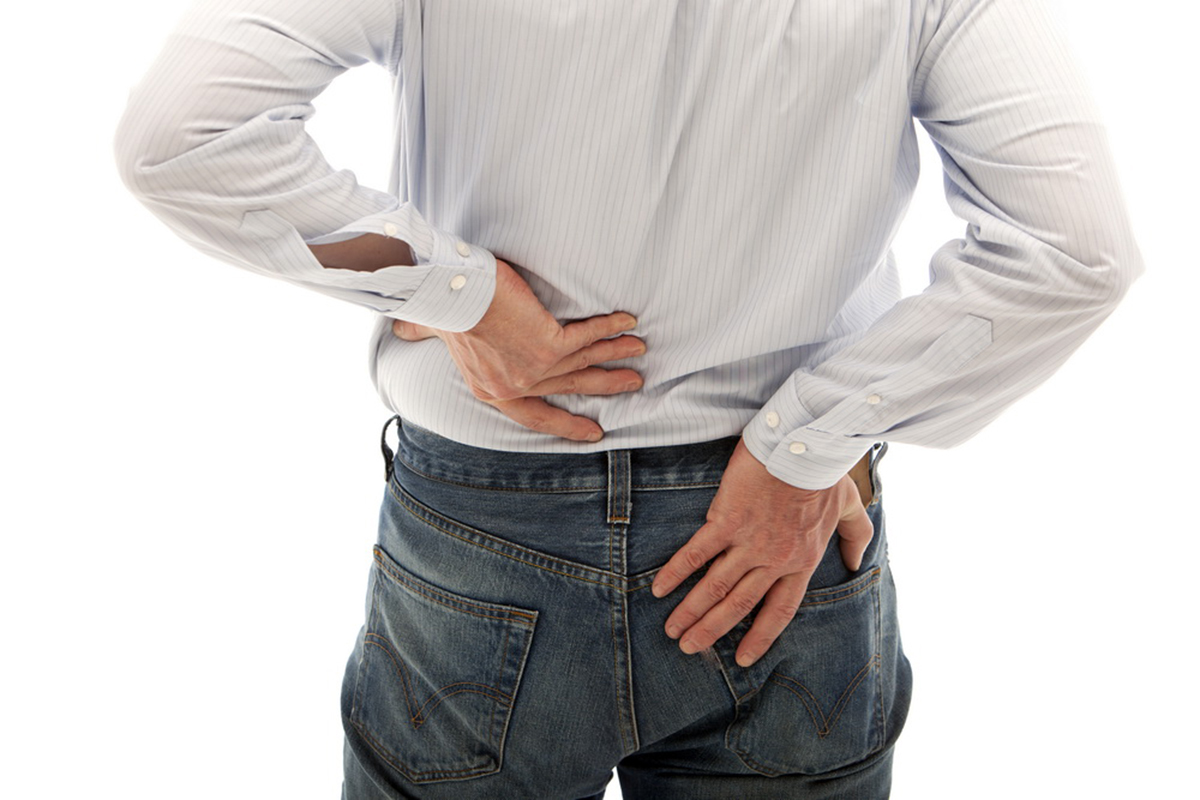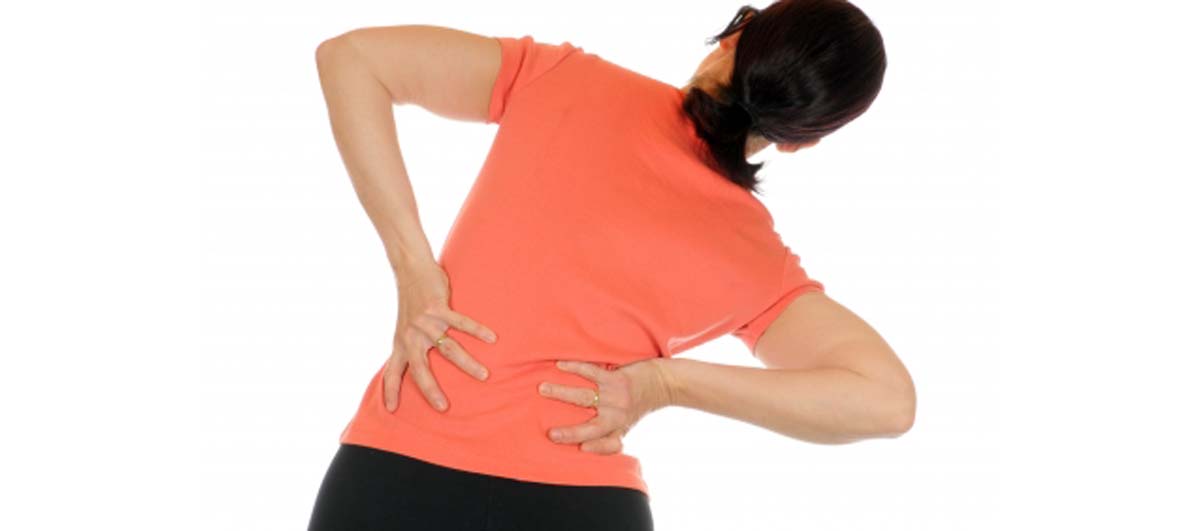The kidneys and the back can cause very similar pain but require very different treatments. Pain in the kidneys may indicate the need for treating kidney stones or an infection. A very similar pain in the back might be resolved with gentle exercise.
Ten Ways to Tell Them Apart
Differentiating kidney pain and back pain ultimately requires medical diagnosis, but you can make a good guess even before you make the appointment to see your doctor. Here are 10 important distinguishing features between the pains that are caused by your kidneys and the pains that originate in your back.
1. Back pain is usually dull, but kidney pains are usually sharp
Pain in the back often originates in a degenerating disk, a process that occurs slowly over months, years, or even decades. Pain in the kidneys often originates in pressure caused by blocking the flow of urine. It often comes on quickly and is "colicky," generating spasms of intense pain with intermittent relief.[1]2. Kidney pain goes away quickly when the kidney problem is resolved, but back pain usually lingers
It's possible, of course, to have back and kidney problems simultaneously. When this occurs, lingering, dull pain usually indicates a problem with the disks of the spine.[1]3. Back pain usually starts in the middle of the back and then spreads to the sides
Kidney pain usually starts on one side (not both), and spreads to the middle. Since the kidneys are located to the sides of the spine, an infection of the kidneys or an injury to the kidneys (a "kidney punch") usually starts at the left or right flank and moves horizontally. Back pain usually radiates vertically down to the legs or up to the neck.[2]4. When pain originates in the kidneys, pushing on the area over the kidneys intensifies the pain
When pain originates in the back, pushing on the area over the kidneys does not make pain worse.[3]5. Back pain usually has a definite start and an indefinite end
Kidney pain usually has an indefinite start and a definite end. Back pain is often traced to an identifiable injury, but resolution of the back injury is slow. Kidney pain usually develops slowly as an infection develops or stones accumulate, but ends quickly when the underlying cause is treated.[4]6. Changes in urine color, odor, or consistency, or blood in the urine, point to a kidney problem
7. Kidney stones in children usually cause sudden pain in the flank that radiates downward and toward the abdomen
Kidney stones pregnant women usually cause sudden pain starting in the flank and radiating to the groin or vagina, but not the lower abdomen. Kidney stones in women who are not pregnant and men may cause intense pain, but sometimes cause no pain at all, just fatigue, weight loss, nausea, and loss of appetite.[5]8. Kidney infections, also known as pyelonephritis, sometimes cause the slightest touch to the flank area to be painful.
They are usually accompanied by fever, blood in the urine, nausea, and vomiting.[6]9. Back pain usually gets worse during bed rest, and is relieved by light exercise.
Kidney pain usually gets better during bed rest, and can be exacerbated during exercise.[1]10. Burning during urination is always a symptom of a kidney problem
One-side pain is almost always a symptom of kidney problems, not back problems.[7]You should see your doctor about the most effective course of treatment for either kidney pain or back pain. But there are also things you can do that work for both conditions.
Ten Supportive Therapies That Work for Both Kidney Pain and Back Pain
Professional medical and chiropractic treatment are usually the fastest way to overcome kidney or back pain. There are certain steps you can take at home, however, but before and after you visit your doctor.
Here are 10 more suggestions.
 1. When life hands you back pain or kidney pain, drink lemonade. Lemon juice, and also lime juice, change the way calcium is released from bone so that bones are stronger and there is less calcium to form kidney stones.[8]
1. When life hands you back pain or kidney pain, drink lemonade. Lemon juice, and also lime juice, change the way calcium is released from bone so that bones are stronger and there is less calcium to form kidney stones.[8]
2. Drink eight glasses of water per day. The additional fluid keeps your kidneys flushed, and also hydrates muscles and ligaments that support your back. Do not, however, drink additional water when you are feeling bladder or kidney pain because a stone is blocking the flow of urine.
3. Consider a potassium-magnesium citrate supplement. Potassium-magnesium citrate can drastically reduce the rate at which kidney stones form, and can also strengthen bones. You should not take this supplement if you have kidney failure, or if you take an ACE inhibitor or ACE receptor blocker for high blood pressure.[9]
4. Drink mineral water. The magnesium in mineral water soothes muscle spasms, helps build bone, and stops formation of kidney stones.[10]
5. Avoid cranberry juice and extract unless you know your problem is a bladder or kidney infection. Cranberry juice, even if unsweetened, and cranberry extract both increase kidney stone formation.[11]
6. Drink milk. Milk provides both calcium and phosphate for bones, and reduces the formation of kidney stones made form calcium.[12]
7. Take vitamin B, especially B1 (thiamin), B6 (pyridoxine), and B12 (cobalamin). These three B vitamins make NSAID pain relievers like Aspirin, Ibuprofen, and Tylenol more effective in smaller doses. Lower doses of NSAID pain relievers are easier on the kidneys and also do less damage to the cartilage in the spine and in other joints throughout the body.[13]
8. Avoid citrus juices other than lemon and lime. Orange and grapefruit juices contain chemicals that increase the acidity of the urine, leaching away minerals that would be used to build new bone, making them available to create stones.[14]
9. Warm, moist heat, such as a hot water bottle, relieves both back pain and kidney pain.
10. Pursue a fulfilling sex life without addiction or preoccupation with sex. Traditional Chinese Medicine teaches that the lower back and the kidney are both repositories of the energy called "Jing," and depleting this energy—or failing to use it at all—can cause problems in both areas.
Especially in pregnant women, it is possible to have back problems and kidney problems simultaneously. Fortunately, both kinds of problems tend to resolve themselves when the baby is born.
When knee pain is also an issue, there is almost certainly an underlying health issue affecting all three ares of the body simultaneously, such as an autoimmune disease. Acupuncture and acupressure therapies for either back or kidney problems usually help both, treating autoimmune conditions such as rheumatoid arthritis, lupus, scleroderma, or Sjögren's syndrome, will also strengthen both kidneys and back.
Here are 10 more suggestions.

2. Drink eight glasses of water per day. The additional fluid keeps your kidneys flushed, and also hydrates muscles and ligaments that support your back. Do not, however, drink additional water when you are feeling bladder or kidney pain because a stone is blocking the flow of urine.
3. Consider a potassium-magnesium citrate supplement. Potassium-magnesium citrate can drastically reduce the rate at which kidney stones form, and can also strengthen bones. You should not take this supplement if you have kidney failure, or if you take an ACE inhibitor or ACE receptor blocker for high blood pressure.[9]
4. Drink mineral water. The magnesium in mineral water soothes muscle spasms, helps build bone, and stops formation of kidney stones.[10]
5. Avoid cranberry juice and extract unless you know your problem is a bladder or kidney infection. Cranberry juice, even if unsweetened, and cranberry extract both increase kidney stone formation.[11]
6. Drink milk. Milk provides both calcium and phosphate for bones, and reduces the formation of kidney stones made form calcium.[12]
7. Take vitamin B, especially B1 (thiamin), B6 (pyridoxine), and B12 (cobalamin). These three B vitamins make NSAID pain relievers like Aspirin, Ibuprofen, and Tylenol more effective in smaller doses. Lower doses of NSAID pain relievers are easier on the kidneys and also do less damage to the cartilage in the spine and in other joints throughout the body.[13]
8. Avoid citrus juices other than lemon and lime. Orange and grapefruit juices contain chemicals that increase the acidity of the urine, leaching away minerals that would be used to build new bone, making them available to create stones.[14]
9. Warm, moist heat, such as a hot water bottle, relieves both back pain and kidney pain.
10. Pursue a fulfilling sex life without addiction or preoccupation with sex. Traditional Chinese Medicine teaches that the lower back and the kidney are both repositories of the energy called "Jing," and depleting this energy—or failing to use it at all—can cause problems in both areas.
Especially in pregnant women, it is possible to have back problems and kidney problems simultaneously. Fortunately, both kinds of problems tend to resolve themselves when the baby is born.
When knee pain is also an issue, there is almost certainly an underlying health issue affecting all three ares of the body simultaneously, such as an autoimmune disease. Acupuncture and acupressure therapies for either back or kidney problems usually help both, treating autoimmune conditions such as rheumatoid arthritis, lupus, scleroderma, or Sjögren's syndrome, will also strengthen both kidneys and back.
- Photo by shutterstock.com

